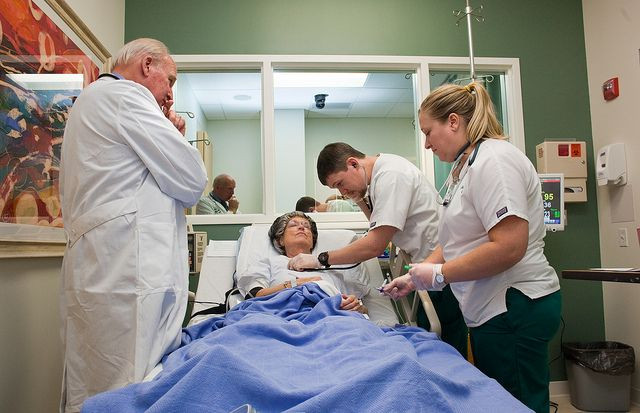CDC Reports 1 in 7 Hospital-Acquired Infections Now Caused By Antibiotic-Resistant Super Bugs

One in every 25 patients develops an infection during a stay in a hospital and many of these hospital acquired infections (HAIs) are caused by antibiotic-resistant bacteria, a new report from the Centers for Disease Control and Prevention finds. “Chilling” and “deeply concerning” is how Dr. Tom Frieden, CDC director, describes the new Vital Signs report outlining the prevalence of hospital infections.
“Every single one of us will be a patient at some point in our lives,” said Frieden during a March 3 conference call to discuss the report. In fact, every year in the United States, about two million people get sick with a super bug infection, while 23,000 people die from these illnesses.
Antibiotic-resistant infections have the potential to affect many of us, says Frieden.
Drugs Won't Work Against Many Infections
While there are many possible infections that can be picked up during a stay in the hospital, more than half include just four types of infections: C. difficile (though not drug resistant, this is a potentially deadly type of diarrhea); urinary tract infections; surgical site infections; and bloodstream infections caused by central lines, those “snaking” tubes used to feed medicines and fluids directly into a large vein, explains Johns Hopkins Dr. Peter Pronovost, who sat in on the conference call.
Of 18 super bugs identified by the CDC as the worst public health threats, six antibiotic-resistant bacteria plus the C. diff bacteria may cause hospital infections, say CDC researchers.
Testing various bacteria isolated from actual infections, the CDC team found nearly half of the Staphylococcus aureus (causes staph infections) were methicillin resistant; nearly a third of enterococci (causes gastrointestinal infections) were vancomycin resistant; 18 percent of Enterobacteriaceae (also an intestinal bug) were drug-resistant strains; four percent of Enterobacteriaceae were carbapenem resistant; 16 percent of Pseudomonas aeruginosa (causes bloodstream infection) were multi-drug resistant, and slightly more than half of Acinetobacter species (causes lung and bloodstream infections) were multi-drug resistant.
In regular hospitals, one in every seven acquired infections are caused by one of these six deadly bugs (or the C. diff bacteria), the researchers say. In long-term care hospitals, it’s one in every four infections.
“Patients are sicker to begin with and they’re in the hospital longer,” Frieden said, and this explains the higher incidence rate in long-term care facilities. Add to that, these patients usually require more equipment and tubes, which possibly spread bacteria.
Unclean rooms and unwashed hands also cause illness. Finally, extremely sick patients sometimes get transferred from acute-care hospitals to long-term facilities and this can lead to infections, explains Pronovost.
Comparing hospitals with very low bloodstream infections to facilities with high infection rates, Pronovost and his team discovered “it wasn’t just one thing” but “specific things” that could increase patient safety. First, leaders declared and committed to a goal of zero infections, Pronovost says. Then, they worked with safety people and engaged doctors, nurses, and all the staff. Finally, they transparently reported their results and assumed accountability.
“It takes an entire organizational commitment,” he said.
Doctors are key to stamping out super bugs, according to Frieden, who adds progress has been made.
Bloodstream infections caused by central line catheters have fallen 50 percent between 2008 and 2014, more than 80 percent since 1999. You have to keep your focus on patient safety “continually,” says Pronovost.



























